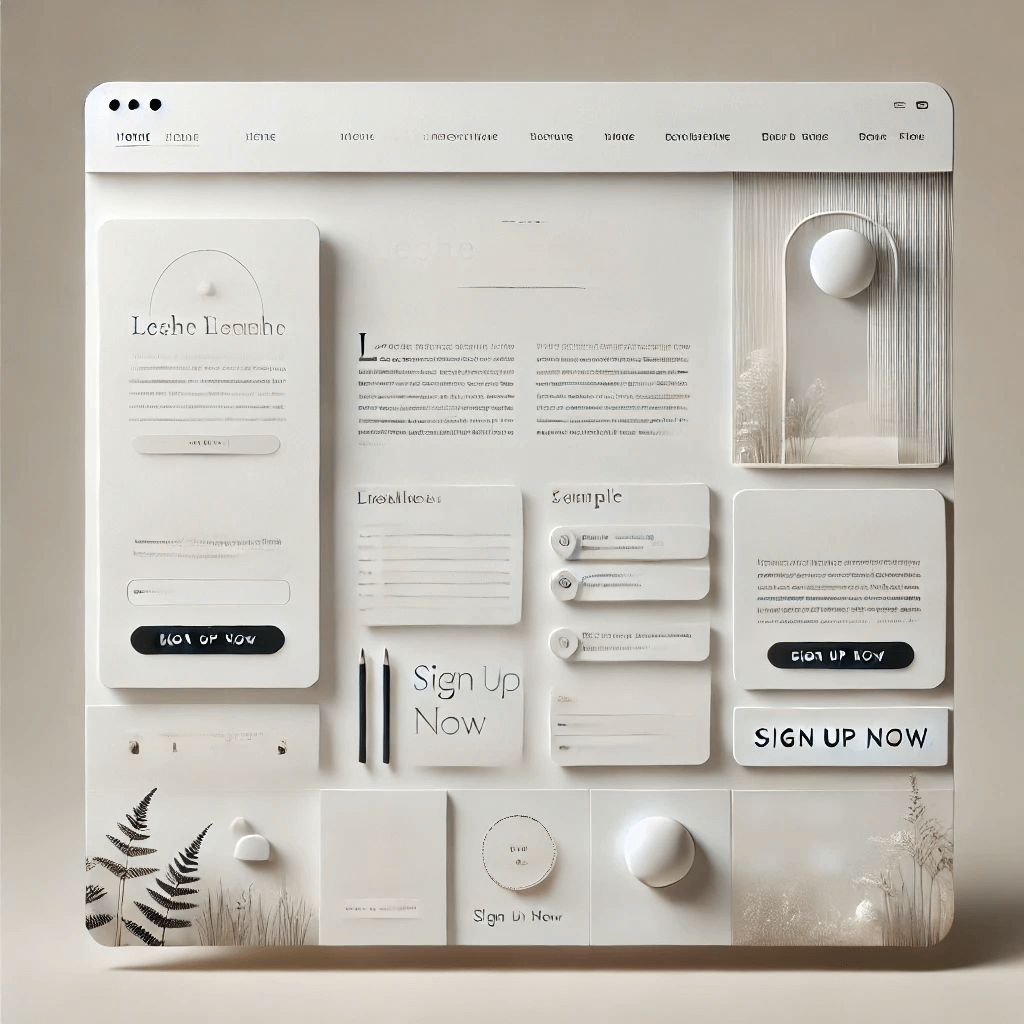Introduction
- What Is Minimalist Website Design?
- Why Minimalist Design Is Gaining Popularity
- Key Benefits of Minimalist Website Design
- How Minimalism Boosts Conversions
- Elements of Effective Minimalist Design
- Case Studies
- Tips for Implementing Minimalist Website Design
- Common Mistakes to Avoid
- When Minimalist Design May Not Work
- Minimalism and the Future of Web Design
- Minimalist Website Design: Why Simplicity Works Best
- Conclusion
- FAQs
In today’s digital landscape, less is often more. Minimalist website design has emerged as a powerful approach that emphasizes simplicity, clarity, and functionality. For businesses, this design philosophy not only enhances the user experience but also boosts performance, SEO, and conversion rates. This article explores the benefits of minimalist design and how it can transform your business website into a streamlined, impactful online presence.
Creating a minimalist website design is a powerful way to enhance user experience and drive business success. By focusing on simplicity, clarity, and functionality, minimalism in web design eliminates distractions and highlights what truly matters. The benefits of minimalism in web design include faster load times, improved SEO, and a visually appealing layout that keeps users engaged. If you’re looking for simple website tips to modernize your site and improve performance, adopting a minimalist approach can make all the difference. Learn how simplicity can transform your website into an effective digital tool.
What Is Minimalist Website Design?
Minimalist website design focuses on eliminating unnecessary elements, leaving only what is essential. Key characteristics include:
- Clean, uncluttered layouts.
- Ample white space for visual balance.
- Limited but purposeful use of colors, typography, and imagery.
Why Minimalist Design Is Gaining Popularity
Minimalism aligns perfectly with modern web design trends, particularly the shift toward mobile-first strategies. It caters to user preferences for intuitive navigation and faster load times, ensuring websites deliver seamless experiences.
Key Benefits of Minimalist Website Design
1. Enhanced User Experience (UX)
A minimalist design eliminates distractions, helping users focus on the core content and functionality of your website. Navigation becomes intuitive, ensuring visitors find what they need quickly.
2. Faster Load Times
By reducing the number of elements on a page, minimalist websites load significantly faster, improving both user satisfaction and search engine rankings.
3. Improved SEO Performance
Clean HTML code and reduced clutter make minimalist websites easier for search engines to crawl and index, boosting their visibility.
4. Cost-Effective Development
With fewer elements to design, code, and maintain, minimalist websites are often more affordable to develop and update.
5. Timeless Appeal
Unlike trendy designs that can quickly feel outdated, minimalist websites maintain their modern and professional appearance over time.
6. Brand Focus
Minimalism allows key branding elements—such as logos, taglines, and messaging—to take center stage, ensuring your brand resonates with visitors.
How Minimalism Boosts Conversions
Fewer distractions mean clearer calls-to-action (CTAs). When users aren’t overwhelmed by visual noise, they are more likely to engage with CTAs such as “Sign Up Now” or “Shop the Collection.”
Elements of Effective Minimalist Design
- Ample White Space: Guides users’ focus and creates a visually pleasing layout.
- Limited Color Palette: Enhances readability and reinforces brand identity.
- Simple Typography: Ensures content is easy to read and visually cohesive.
- High-Quality Images: Prioritizes impactful visuals to complement the design.
Case Studies
1. Retail Brand Transformation
A retail company simplified its e-commerce site by reducing clutter and streamlining navigation. The result? A 30% increase in conversions.
2. Professional Services
A consulting firm adopted a minimalist design, emphasizing its expertise through clean layouts and clear messaging. Client inquiries rose by 25%.
Tips for Implementing Minimalist Website Design
- Start with Clear Goals: Define the purpose of each page to eliminate unnecessary elements.
- Focus on Consistency: Use the same color palette, typography, and layout style across the site.
- Test and Optimize: Use heatmaps and user behavior analysis to refine the design further.
Common Mistakes to Avoid
- Oversimplifying to the point of losing critical functionality.
- Using low-contrast colors, makes content hard to read.
- Overlooking the importance of high-quality visuals.
When Minimalist Design May Not Work
Minimalism is not ideal for all businesses. For example:
- Content-heavy websites, such as news portals, may struggle to organize extensive data with minimalism.
- Brands relying on elaborate, visually striking designs may find minimalist aesthetics limiting.
Minimalism and the Future of Web Design
As web technologies evolve, minimalist design is poised to play a key role in trends like:
- Voice search optimization, which prioritizes clear and concise information.
- AI-driven personalization, tailoring content dynamically without overwhelming users.
Minimalist Website Design: Why Simplicity Works Best

Minimalist website design is more than a trend—it’s a strategic approach that focuses on clean, uncluttered layouts and user-centric functionality. This design philosophy eliminates unnecessary elements, directing attention to essential content and calls to action.
Benefits of Minimalist Website Design
- Faster Load Times: Minimal designs require fewer resources, which translates to quicker loading speeds. This not only improves user experience but also boosts SEO rankings.
- Improved Readability: With ample white space and clear typography, visitors can easily consume content without feeling overwhelmed.
- Higher Engagement:A clutter-free interface ensures users focus on the key message, increasing interaction and conversions.
- Modern Appeal: Minimalist designs exude professionalism and align with modern aesthetic trends, making your brand look sleek and trustworthy.
Incorporating a minimalist website design simplifies navigation and enhances overall usability, ensuring your site leaves a lasting impression.
Conclusion
Minimalist website design offers businesses a pathway to creating visually appealing, high-performing websites that stand the test of time. By focusing on essential elements, businesses can enhance user experience, improve SEO, and drive conversions. If your website feels cluttered or outdated, consider embracing the simplicity of minimalist design to stand out in today’s competitive digital landscape.
FAQs
How does minimalist design impact SEO?
Minimalist designs enhance SEO by providing clean, easy-to-crawl code and faster page load speeds, which Google prioritizes.
What industries benefit most from minimalist websites?
Industries like tech, professional services, and e-commerce often benefit due to the emphasis on usability and brand clarity.
Can a minimalist design work for content-heavy websites?
Yes, but it requires careful planning to organize large amounts of content into easily navigable sections.














